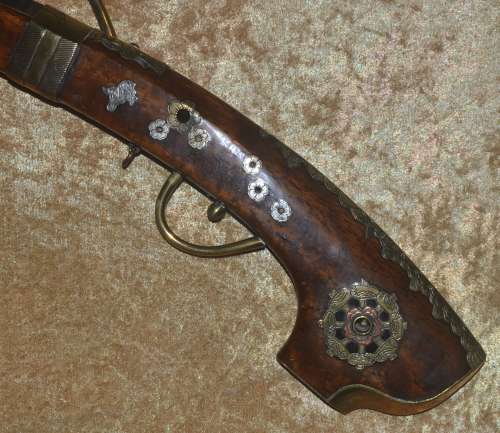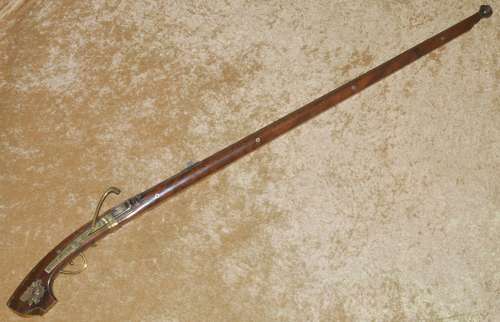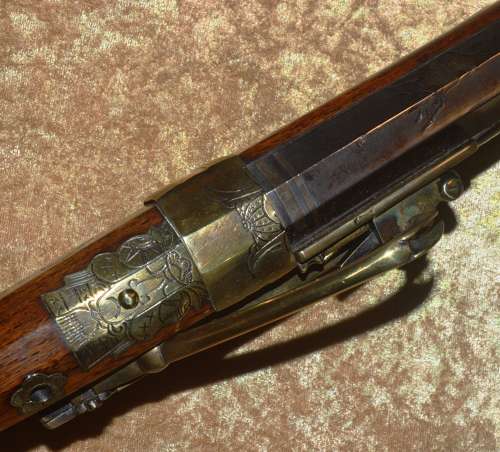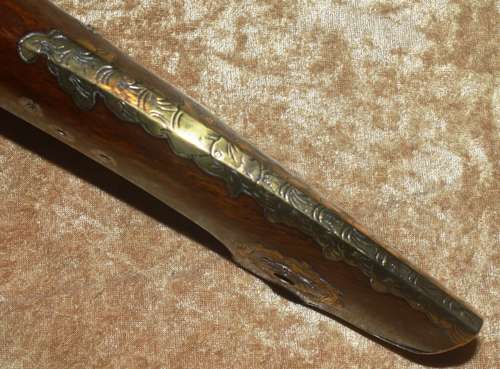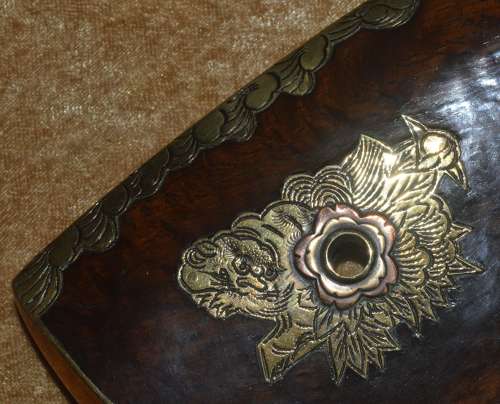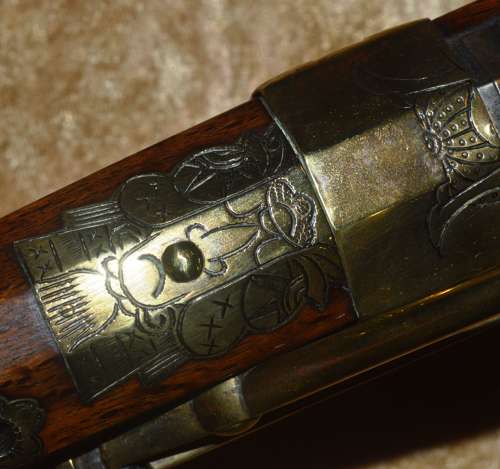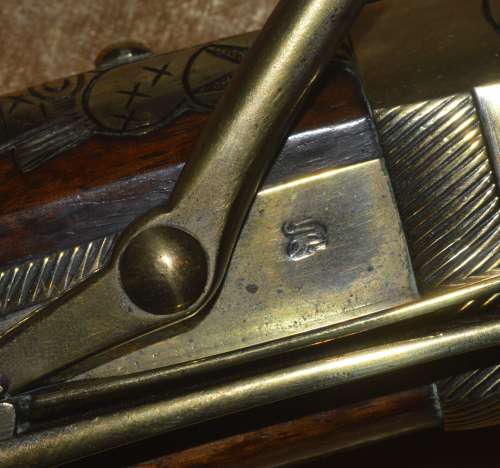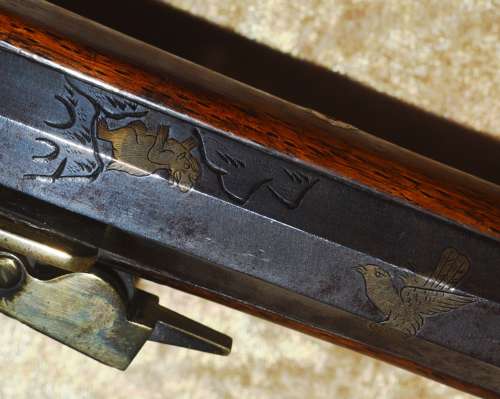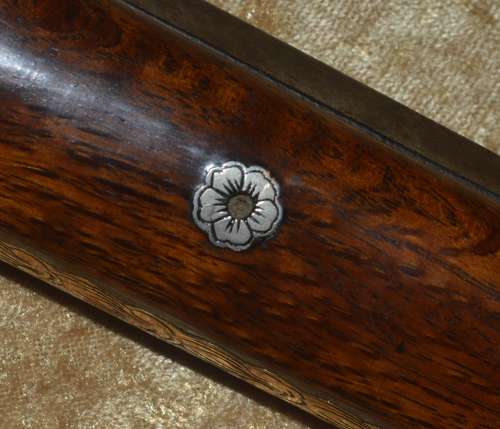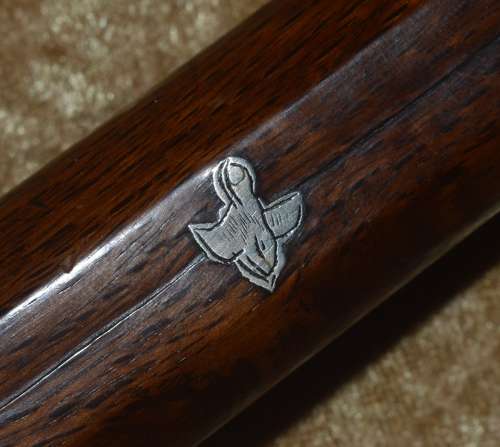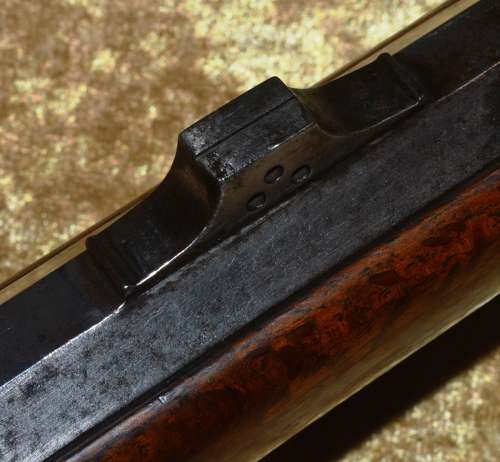
Dealer Information
Dealer: Antique Weapon StoreLocation: Tuckasegee, United States
Tel: +1 828 507 7160
Email: mail@antiqueweaponstore.com
 |
Dealer InformationDealer: Antique Weapon StoreLocation: Tuckasegee, United States Tel: +1 828 507 7160 Email: mail@antiqueweaponstore.com |
|

Code: EM1819
Very ornate example featuring 41 ½" tapering octagonal barrel of approximately .50 caliber
with cannon muzzle; engraved and inlaid with gold animal figures and twin bands at the
breech. Fixed front blade sight and fixed heavy rear notch sight. Brass snap matchlock
mechanism with pivoting brass pan cover; stamped with a maker’s mark forward of the
brass serpentine cock. Beautiful figured fruitwood full stock inlaid with numerous brass,
copper, and silver decorations depicting animals, flowers, and foliage. Four barrel pins,
each with a silver cherry blossom cap on both sides. The underside of the stock features a
25" long decorative inlaid brass strip; brass trigger and trigger guard. Overall length 53 ½",
weighing 8 pounds 12 ounces. In very good plus condition for its age. These can be difficult
to date but we imagine it is from the early 19th Century.
This type of gun was often referred to as Tanegashima, after the island where a Chinese
junk with Portuguese adventurers on board was driven to anchor by a storm in 1543. The
local lord purchased two matchlocks from the Portuguese, and then had his swordsmith
copy the weapon. Making some parts proved problematic, so a Portuguese blacksmith was
brought over to assist and the guns were completed with much success.
These were also often called “hinawaju” in Japanese, meaning "matchlock gun". They were
used by the samurai class and their foot soldiers (ashigaru). Though slow to load and fire,
within a few years the introduction of the Tanegashima in battle changed the way war was
fought in Japan forever.
Subsequently, Japan returned to being essentially a closed society, essentially blocking
contact with the outside world. Due to this, the use of the Tanegashima continued until the
1870s and early 1880s. With the coming of the MEIJI era in 1868, this saw the beginning of
the modernization of Japan. However the old Shogun War Lords, wishing to maintain the
old ways, rebelled in the Satsuma Rebellion of 1878.
